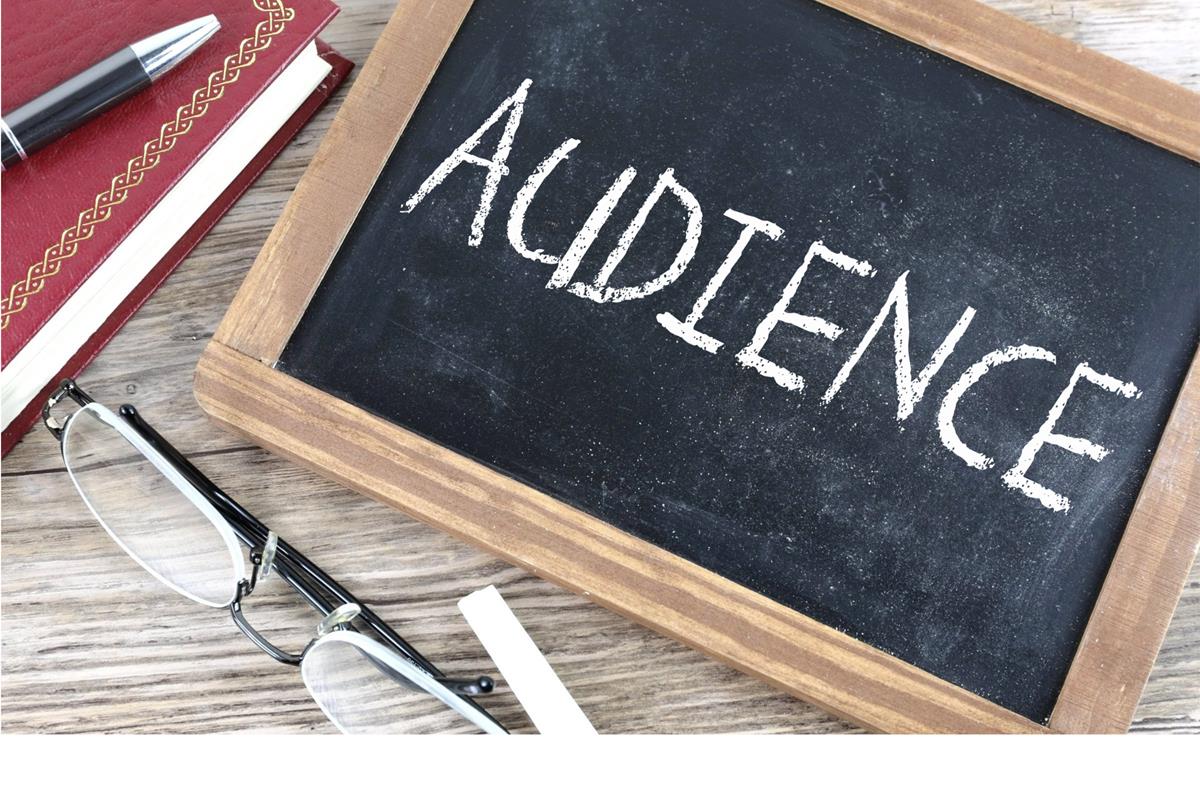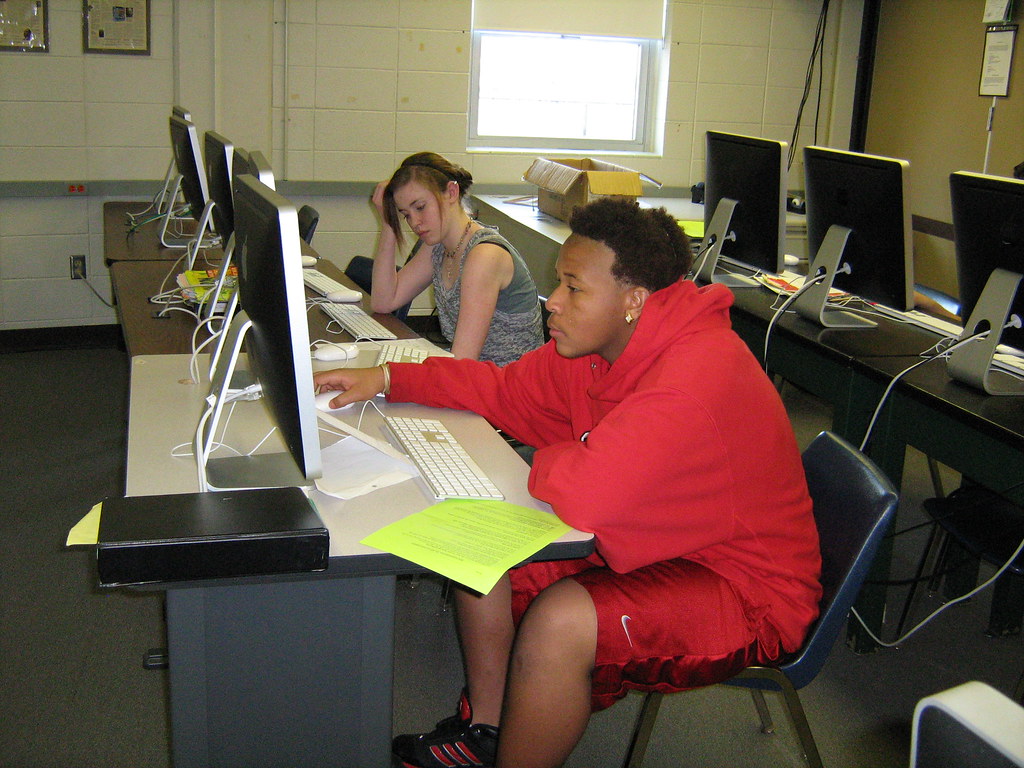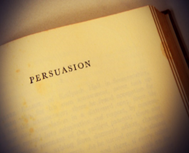Tổng quan các chủ đề
-
Welcome to CCOM 2313 - Business & Professional Communication!
Course Introduction
This course will teach you how to communicate effectively in a professional context, focusing on both oral and written communication skills, including business correspondence, interviewing, individual presentations, group problem-solving and adapting to organizational cultures.Upon successful completion of this course, the student will be able to:
- Recognize business situations/issues (both positive & negative) and formulate appropriate responses
- Demonstrate an awareness of the rhetorical theory and understanding the relationship between audience, purpose, and text.
- Create professional business/technical documents in appropriate formats using correct grammar and effective style, structure, and visual elements
- Deliver professional and polished presentations (in person or virtually) using appropriate style, structure and visual elements
- Demonstrate effective communication and collaboration skills within a group or team
- Demonstrate cultural competence in business communication
- Discriminate between ethical and unethical communication practices
Adopting institution should provide learners information on how to navigate the course. Consider adding an introductory navigation video. Text description could include, for example:Navigating the Course
This course is set up in Modules covering various topics which may be accessed from the course navigation menu on the left or by scrolling below. Modules may be collapsed in the menu and it the body of the course to minimize scrolling. Each module includes the relevant chapters followed by various activities, which may include discussion forums, listening activities and quizzes, practice quizzes, module tests, and other relevant activities as appropriate for each module. Many items are required and may be marked as completed automatically when the activity has been submitted (the broken check box), but others will marked as done by the student (the solid check box).Please move through the items below and continue through the Learner Support and Getting Started modules before moving on to Module 1. Be sure to check for announcements and due dates to stay on track.
 This course and its contents are licensed under a Creative Commons Attribution 4.0 International License by LOUIS: The Louisiana Library Network, except where otherwise noted.
This course and its contents are licensed under a Creative Commons Attribution 4.0 International License by LOUIS: The Louisiana Library Network, except where otherwise noted. -
This module contains all the items you should review and complete before you begin Module 1. Before moving on, be sure to:
- Check the News and Announcements Forum
- Read the Course Syllabus
- Introduce yourself to the class
- Read the instructions for the Q & A Forum
Good luck in the course!-
Use this forum to tell us a little about yourself and your interests. Some topic ideas:
- What is your field of study/research interest or concentration?
- What are you most interested in learning about in this class and why?
- Have you ever taken an online class before?
- Any other information you would like to share with your classmates, such as special interests or activities.
Post a picture! We look forward to meeting you.
-
Use this forum to ask your instructor any questions you have about the course. You may post at any time, and your instructor will respond here. Be as specific as possible.
Please keep in mind that others can see your posts, so do not post any personal information. If you have questions about your grade, please email your instructor directly. You can expect a response to posts and emails within [X] hours. [Recommendation is 24 hours M-F, next business day on weekends.]
Subscription should be set to Auto.
- Check the News and Announcements Forum
-
Use the information in this module to customize the template to your needs. This module is currently hidden from students, and available for you to refer to throughout the semester.
-
What
 is the difference between a Communications course, and an English course? One may believe because they know how to communicate in English means they understand the business of communication. We do not speak the same way to our parents as we would between friends, or a teacher. We may not even speak the same language with our friends at school and our family members. Therefore, understanding when certain formalities and language are appropriate, and when to even send communication, are skillsets that maintain bonds within this wide net of relationships. One may not call a friend in Paris at 3 am, simply because it is a more acceptable hour in Baton Rouge. If there is an emergency, perhaps the time is necessary and should be done through telephone call rather than by email, which a person likely has on Do Not Disturb or silent through overnight hours. While an urgent email may be read faster than others, it may not be read until early Monday morning if sent over the weekend. Understanding the functions of sending a message - including means, time, and quality of delivery - is essential to your reputation. Stories in language courses (like English Language Arts) allow us to view the words and actions of characters; Communications focuses on communicating you to the world.Upon completion of this module, you will be able to:
is the difference between a Communications course, and an English course? One may believe because they know how to communicate in English means they understand the business of communication. We do not speak the same way to our parents as we would between friends, or a teacher. We may not even speak the same language with our friends at school and our family members. Therefore, understanding when certain formalities and language are appropriate, and when to even send communication, are skillsets that maintain bonds within this wide net of relationships. One may not call a friend in Paris at 3 am, simply because it is a more acceptable hour in Baton Rouge. If there is an emergency, perhaps the time is necessary and should be done through telephone call rather than by email, which a person likely has on Do Not Disturb or silent through overnight hours. While an urgent email may be read faster than others, it may not be read until early Monday morning if sent over the weekend. Understanding the functions of sending a message - including means, time, and quality of delivery - is essential to your reputation. Stories in language courses (like English Language Arts) allow us to view the words and actions of characters; Communications focuses on communicating you to the world.Upon completion of this module, you will be able to:- Distinguish between the nature of English and Communications courses (Course Outcome #1,2)
- Explain the importance of studying Communications (C.O. #1,7)
- Identify communication-related skills and personal qualities favored by employers. (C.O. #2,3,4,5,6,7)
- Consider how communication skills will ensure your future professional success. (C.O. #2,3,4,5,6,7)
- Recognize that the quality of your communication represents the quality of your company. (C.O. #2,3,4,5,6,7)
- Distinguish between personal and professional uses of communications technology in ways that ensure career success and personal health. (C.O. #2,3,4,5,6,7)
- Select and use common, basic information technology tools to support communication. (C.O. #3,4)
- Illustrate the communication process to explain the end goal of communication. (C.O. #1,2,5,7)
- Troubleshoot communication errors by breaking down the communication process into its component parts. (C.O. #1,2,3,4,5,7)
- Reframe information gained from spoken messages in ways that show accurate analysis and comprehension. (C.O. #1,2,3,4,5,7)
To achieve these objectives:
- Read the Module 1 Introduction
- Read and view the materials in Chapter 1 of Strategies for Effective Business Communication
- Complete the interactive activities at the end of the Chapter which can be found under "Test Your Knowledge."
Module Pressbooks Resources and Activities
You will find the following resources and activities in this module at the Pressbooks website. Click on the links below to access or complete each item.
- Distinguish between the nature of English and Communications courses (Course Outcome #1,2)
-
 Knowing your audience is imperative when writing a well written professional message. Your writing will reflect on you and your knowledge and may determine the recipient's perspectives of you. Not adjusting your message and its tone in accordance with your audience can have a negative impact on your future career or current employment. Therefore, it is very important to analyze your audience before writing a message. We have previously discussed how to troubleshoot miscommunication. Determining the proper tone and content of your message based on the audience is the first step in avoiding miscommunication. In future chapters, you will learn the next steps of the writing process: how to draft your message, and how to revise it to create the four Ps: your perfectly polished professional presence.
Knowing your audience is imperative when writing a well written professional message. Your writing will reflect on you and your knowledge and may determine the recipient's perspectives of you. Not adjusting your message and its tone in accordance with your audience can have a negative impact on your future career or current employment. Therefore, it is very important to analyze your audience before writing a message. We have previously discussed how to troubleshoot miscommunication. Determining the proper tone and content of your message based on the audience is the first step in avoiding miscommunication. In future chapters, you will learn the next steps of the writing process: how to draft your message, and how to revise it to create the four Ps: your perfectly polished professional presence.
"Audience" by Nick Youngson CC BY-SA 3.0 Alpha Stock Images
Upon completion of this module, you will be able to:
- Analyze primary and secondary audiences using common profiling techniques (CO#2)
- Identify techniques for adjusting writing style according to audience size, position relative to you, knowledge of your topic, and demographic. (CO#2)
- Distinguish between communication channels to determine which is most appropriate for particular situations. (CO#1 and 2)
- Plan, write, revise, and edit short documents and messages that are organized, complete, and tailored to specific audiences. (CO#2)
To achieve these objectives:
- Read the Module 2 Introduction
- Read and view the materials in Chapter 2 of Strategies for Effective Business Communication
- Complete the interactive activities at the end of the Chapter which can be found under "Test Your Knowledge."
Module Pressbooks Resources and Activities
You will find the following resources and activities in this module at the Pressbooks website. Click on the links below to access or complete each item.
-
 As you begin to plan the outline of your writing, you
will find that in order to develop your points logically, you will need to
incorporate additional data. Conducting research, thus, becomes an important
tool to build your writing with valid data. This chapter will focus on the
various strategies for conducting research, identifying valid sources,
eliminating bias, providing effective solutions to business-related problems, summarizing
and quoting research data into your own writing, and documenting sources according to different styles. "Students researching in the new lab" by shersh is licensed under CC BY-ND 2.0. (Links open in new window)Upon completion of this module, you will be able to:
As you begin to plan the outline of your writing, you
will find that in order to develop your points logically, you will need to
incorporate additional data. Conducting research, thus, becomes an important
tool to build your writing with valid data. This chapter will focus on the
various strategies for conducting research, identifying valid sources,
eliminating bias, providing effective solutions to business-related problems, summarizing
and quoting research data into your own writing, and documenting sources according to different styles. "Students researching in the new lab" by shersh is licensed under CC BY-ND 2.0. (Links open in new window)Upon completion of this module, you will be able to:- Determine the appropriate
research methodology that meets the needs of the audience. (CO #1, 2)
- Distinguish between formal and informal research. ( CO #1, 2, 3)
- Quote source text directly with accuracy and correct punctuation. ( CO # 3)
- Use effective reading strategies to collect and reframe information from a variety of written materials accurately. ( CO #3, 4)
- Locate, select, and organize relevant and accurate information drawn from a variety of sources appropriate to the task. (Co # 3, 4, 7)
- Integrate and document information using commonly accepted citation guidelines. ( CO # 3, 5, 6)
- Avoiding Bias in Research ( CO # 2, 6, 7)
To achieve these objectives:
- Read the Module 3 Introduction
- Read and view the materials in Chapter 3 of Strategies for Effective Business Communication
- Make notes as you review
- Complete all quizzes, tests and assignments.
Module Pressbooks Resources and Activities
You will find the following resources and activities in this module at the Pressbooks website. Click on the links below to access or complete each item.
-
Instructions
This assignment addresses course outcomes # 1, 3, 4, 7.
Pick one of the topics (a) The economic impact of the Ukranian-Russian war in the world, or ( b) Reducing gun violence in America. Using research methodologies that you learned, conduct research using newspaper articles and valid websites. You can also consult appropriate journal articles and textbooks on the topic. Summarize and paraphrase in your own words what you found. Eliminate bias and report your data in an objective manner. Cite sources accurately according to a style of your choice. Create a References page using the same documentation style.
Activity completion: set to "Student must submit this activity to complete it," with expected completion date if desired.
- Determine the appropriate
research methodology that meets the needs of the audience. (CO #1, 2)
-
 You have by now
learned how to analyze audience and purpose and collect relevant research data.
In this chapter you will learn the different stages of the writing process –
planning, drafting, and editing. Planning strategies can include brainstorming,
outlining, or freewriting. These techniques help in composing the message. Once
the first draft is completed, editing the document is crucial for improving the
quality of the written message and removing errors. You will also learn the
basic principles of document design and formats common in business
communication.
You have by now
learned how to analyze audience and purpose and collect relevant research data.
In this chapter you will learn the different stages of the writing process –
planning, drafting, and editing. Planning strategies can include brainstorming,
outlining, or freewriting. These techniques help in composing the message. Once
the first draft is completed, editing the document is crucial for improving the
quality of the written message and removing errors. You will also learn the
basic principles of document design and formats common in business
communication.“Work smart” by Rasheedhrasheed is licensed CC BY
Upon completion of this module, you will be able to:
- Use effective reading strategies to collect and reframe information from a variety of written materials accurately. (CO # 1, 2, 3)
- Apply outlining techniques to begin drafting a document. ( CO# 2, 3)
- Plan, write, revise, and edit short documents and messages that are organized, complete, and tailored to specific audiences. (CO# 2, 3, 4)
- Apply the principles of reader-friendly document design to various written formats. ( CO# 3, 6, 7)
To achieve these objectives:- Read the Module 4 Introduction
- Read and view the materials in Chapter 4 of Strategies for Effective Business Communication
- Make notes as you review
- Complete all quizzes, tests and assignments.
Module Pressbooks Resources and Activities
You will find the following resources and activities in this module at the Pressbooks website. Click on the links below to access or complete each item.
-
This assignment satisfies CO #1,2, 3, 4, 6, 7
Plan, research and provide an outline on “How to Apply for Scholarships in College”. Research and collect data on your preferred states and institutions. Imagine you are writing for high school students who are getting ready to graduate and apply to schools. Provide a complete Reference list with complete documentation.
-
Your paper is almost done. Your intentions are intact. Your argum
 ent is clear. Your closing is bold. However, if your audience has a chance to see the words on the paper, they need to make as much sense to them as your messages seem to you. Self-editing is a tedious process, as we gain a sense of passion and protection for the words we have labored arduously; we may find ourselves using the wrong word spellings - like our and are, or there and their - within our written words. These errors can weaken our message. We must pay attention to the proper usage of words, even name spellings, to show respect for those with which we communicate.
ent is clear. Your closing is bold. However, if your audience has a chance to see the words on the paper, they need to make as much sense to them as your messages seem to you. Self-editing is a tedious process, as we gain a sense of passion and protection for the words we have labored arduously; we may find ourselves using the wrong word spellings - like our and are, or there and their - within our written words. These errors can weaken our message. We must pay attention to the proper usage of words, even name spellings, to show respect for those with which we communicate.("untitled" by Nic McPhee CC BY-SA 2.0)
Upon completion of this module, you will be able to:- Revise and edit short documents and messages that are organized, complete, and tailored to specific audiences. (Course Outcome #1,2,3,5,6,7)
To achieve this objectives:
- Read the Module 5 Introduction
- Read and view the materials in Chapter 5 of Strategies for Effective Business Communication
- Complete the interactive activity at the end of section 5.2 in the Chapter, which can be found under "Test Your Knowledge."
Module Pressbooks Resources and Activities
You will find the following resources and activities in this module at the Pressbooks website. Click on the links below to access or complete each item.
-
 After learning the main three steps of the writing process: analyzing your audience, drafting your message, and editing it, it is time to learn the tips and tricks how to write short messages, which are used the most in business and professional communication. Short messages and can be divided into three main categories: positive, negative, and persuasive messages. This section will discuss positive messages (including information, requests, and replies) and negative messages (typically utilized in claims and complaints).
After learning the main three steps of the writing process: analyzing your audience, drafting your message, and editing it, it is time to learn the tips and tricks how to write short messages, which are used the most in business and professional communication. Short messages and can be divided into three main categories: positive, negative, and persuasive messages. This section will discuss positive messages (including information, requests, and replies) and negative messages (typically utilized in claims and complaints).Image License: CC0 1.0 Universal (CC0 1.0)
Upon completion of this module, you will be able to:- Plan, write, revise, and edit short documents and messages that are organized, complete, and tailored to specific audiences. (CO#1 and 3)
- Write routine message types such as information shares, requests, and replies; complaints and claims; and recommendation and goodwill messages (CO#1 and 3)
- Organize and write persuasive messages. (CO#1)
- Organize and write negative messages. (CO#1)
To achieve these objectives:
- Read the Module 6 Introduction
- Read and view the materials in the Chapter 6 of Strategies for Effective Business Communication
- Complete the 6.4: Sample Before/After Messages activity and 6.5: Practice Breaking Bad News activity from the textbook.
Module Pressbooks Resources and Activities
You will find the following resources and activities in this module at the Pressbooks website. Click on the links below to access or complete each item.
- Plan, write, revise, and edit short documents and messages that are organized, complete, and tailored to specific audiences. (CO#1 and 3)
-
 You have learned the fundamentals of drafting routine messages. Persuasion is an important technique that allows you to convince the audience to do something with the help of valid details. These techniques were identified by classical scholars like Aristotle which are still used today. Persuasion is used to write proposals, bad news messages, and recommendation reports.
You have learned the fundamentals of drafting routine messages. Persuasion is an important technique that allows you to convince the audience to do something with the help of valid details. These techniques were identified by classical scholars like Aristotle which are still used today. Persuasion is used to write proposals, bad news messages, and recommendation reports."Persuasion" by reihayashi is licensed under CC BY-NC-ND 2.0.
Upon completion of this module, you will be able to:
- Understand and Apply Persuasion (CO# 1, 2, 3, 4, 7)
- Learn the basic concepts of Classical Rhetoric and Aristotle and the Three Appeals (CO# 1, 2, 6, 7)
- Review the Principles of Persuasion (CO# 1, 2, 4)
- Organize and write persuasive messages through Indirect AIDA Pattern of Persuasion (CO# 2, 3, 6)
To achieve these objectives:
- Read the Module 7 Introduction
- Read and view the materials in Chapter 7 of Strategies for Effective Business Communication
- Make notes as you review
- Complete all quizzes, tests and assignments.
Module Pressbooks Resources and Activities
You will find the following resources and activities in this module at the Pressbooks website. Click on the links below to access or complete each item.
-
Instructions
This assignment addresses course outcome(s) 1-7.
Locate a place on campus that students frequently use, but needs repair. It could be a computer lab or a science lab, or the library. Investigate the problem and research for solutions. Gather data from the staff. Write a recommendation report to the Dean of Students persuading her to fix the problem.
-
 The most used written document that you are likely to utilize at your employment will be emails. Although emails are considered to be routine messages and you will be writing a lot of them, they still must demonstrate your polished professional presence. Therefore it is very important to master the art of writing emails, so that you may do so quickly and efficiently but without making any errors in grammar or style. This chapter will also discuss how to write professionally on websites, on social media, in text messages, and on instant messaging platforms. In the following chapters you will utilize all of this knowledge to guide you during the process of finding employment and advancing your career.
The most used written document that you are likely to utilize at your employment will be emails. Although emails are considered to be routine messages and you will be writing a lot of them, they still must demonstrate your polished professional presence. Therefore it is very important to master the art of writing emails, so that you may do so quickly and efficiently but without making any errors in grammar or style. This chapter will also discuss how to write professionally on websites, on social media, in text messages, and on instant messaging platforms. In the following chapters you will utilize all of this knowledge to guide you during the process of finding employment and advancing your career.Image license: CC0
Upon completion of this module, you will be able to:
- Identify characteristics of effective professional emails. (CO#3)
- Plan, write, revise, and edit short documents and messages that are organized, complete, and tailored to specific audiences. (CO# 2 and 3)
- Select and use common, basic information technology tools to support communication. (CO#3)
- Discuss emerging netiquette standards in social media used for professional purposes. (CO#3)
- Use rapid electronic communication channels such as texting and instant messaging in a professional manner. (CO#3)
To achieve these objectives:
- Read the Module 8 Introduction
- Read and view the materials in the Chapter 8 of Strategies for Effective Business Communication
- Complete the "Test Your Knowledge" activities in Chapter 8 in the order as they appear in the textbook.
Module Pressbooks Resources and Activities
You will find the following resources and activities in this module at the Pressbooks website. Click on the links below to access or complete each item.
- Identify characteristics of effective professional emails. (CO#3)
-

Chapter 9 discusses the tools for completing a job search, using various methods and resources. Learners will develop techniques for completing the written component of the job search which consists of a cover letter and resume which will showcase their relative job skills.
"Office workspace - Apply now text on clipboard" by Marco Verch is licensed CC BY
Upon completion of this module, you will be able to:
- Effectively conduct a job search by using various search tools and initiatives. (CLO #1)
- Complete a self-assessment in regard to skills, strengths, and abilities desirable for employment. (CLO #2)
- Craft a cover letter tailored to a specific job advertisement. (CLO #3)
- Develop a resume that showcases job history, education, relatable work skills, etc. (CLO #3)
To achieve these objectives:
- Read the Module 9 Introduction
- Read and view the materials in Chapter 9 of Strategies for Effective Business Communication
- Complete the exercises at the end of sections 9.1, 9.2, and 9.3 of the textbook.
Module Pressbooks Resources and Activities
You will find the following resources and activities in this module at the Pressbooks website. Click on the links below to access or complete each item.
- Effectively conduct a job search by using various search tools and initiatives. (CLO #1)
-

Until now, this text has focused mainly on strategies for written communication. Chapter 10 turns the attention to acquiring soft skills for communicating effectively. Additionally, learners are given steps to successfully prepare for a job interview.
"Flowers & Plants in the Workplace" by Flower Factor is licensed under CC BY-NC 2.0. (Links open in new window)
Upon completion of this module, you will be able to:
- identify the 5 parts of a conversation and how to utilize them within spoken messages and job interviews. (CLO #4, 6, 8).
- Define professional behaviors in the workplace in relation to proper attire, communicating verbally, and ethics. (CLO #1, 2, 5, 7)
- Communicate effectively when answering behavioral questions within an interview setting. (CLO# 9)
- Define and identify sexual harassment prevention strategies. (CLO# 3)
To achieve these objectives:
- Read the Module 10 Introduction
- Read and view the materials in Chapter 10 of Strategies for Effective Business Communication
- Complete the exercises at the end of sections 10.1, 10.2, and 10.3 of the textbook.
Module Pressbooks Resources and Activities
You will find the following resources and activities in this module at the Pressbooks website. Click on the links below to access or complete each item.
- identify the 5 parts of a conversation and how to utilize them within spoken messages and job interviews. (CLO #4, 6, 8).
-

Almost every posting for a job opening in a workplace location lists teamwork among the required skills. Why? Is it because every employer writing a job posting copies other job postings? No, it's because every employer's business success depends on people working well in teams to get the job done. This chapter explores group communication and strategies for working together toward a common goal.
“AFLCMC Small Business Office” by Brian Brackens is public domain
Upon completion of this module, you will be able to:
- Demonstrate how to handle various workplace conflicts and resolve them in a professional manner. (CLO# 3, 5. 6)
- Identify the contents of a meeting agenda. (CLO# 7)
- Describe best practices for solving problems as a group. (CLO# 4)
- Define teamwork and how to contribute to that dynamic positively. (CLO# 1, 2)
To achieve these objectives:
- Read the Module 11 Introduction
- Read and view the materials in Chapter 11 of Strategies for Effective Business Communication
- Complete the exercises in section 11.5 of the textbook ("Practice Makes Perfect").
Module Pressbooks Resources and Activities
You will find the following resources and activities in this module at the Pressbooks website. Click on the links below to access or complete each item.
- Demonstrate how to handle various workplace conflicts and resolve them in a professional manner. (CLO# 3, 5. 6)
-

Whether you have a marketing presentation coming up for a potential client or a scientific presentation to give to your expert colleagues, you want to be certain your presentation is built on a sound foundation of current concerns and trends your audience will want you to address. This module will help you consider how to organize presentation information and develop a winning strategy for a surefire professional presentation. While knowledge and research on your topic are key to an effective presentation, do not underestimate the importance of organization.
“untitled” by Bovee and Thill is CC BY
Upon completion of this module, you will be able to:
- Identify the different methods of presentation delivery. (C.O. #4)
- Identify key elements in preparing to deliver a presentation. (C.O. #4)
- Utilize specific techniques to enhance speech delivery. (C.O. #4)
- Demonstrate how to methodically plan a presentation. (C.O. #4)
To achieve these objectives:
- Read the Module 12 Introduction
- Read and view the materials in Chapter 12 of Strategies for Effective Business Communication
- Complete the exercises at the end of Chapter 12 of Strategies for Effective Business Communication
Module Pressbooks Resources and Activities
You will find the following resources and activities in this module at the Pressbooks website. Click on the links below to access or complete each item.
-

Typically you may consider the word “rhetoric” to refer to written text, which is used to persuade, inform, or both. The same can be said about all of the visual communication that we encounter on a daily basis. We are bombarded with scores of visual messages daily: billboards, t-shirt slogans, company logos, the formatting of a document, and everything you can discern in-between. Visuals ultimately have the power to make arguments – to convince, to stir up emotion, or to simply assist audience in understanding a topic in order to make an informed decision. Visual rhetoric is important because these visual messages should work in tandem with written message. When these two types of rhetoric, visual and textual, are in conflict, the audience receives a mixed message and a confusing one as well. Therefore, it is important for visual rhetoric to complement any accompanying textual rhetoric (or vice-versa).
"Hand, bar and pie chart, dark" by Maximilianklein is licensed CC BY-SA
Upon completion of this module, you will be able to:
- Learn how
to format a basic memorandum for style and content. (C.O. #2,3)
- Learn
different sub-genres of various memoranda. (C.O. #2,3)
- Identify key elements of visual rhetoric. (C.O. #2)
- Hone basic email skills. (C.O. #3)
- Learn hot to format a basic report for style and content, including an executive summary. (C.O. #2,3)
- Learn how to incorporate graphics. (C.O. #3)
To achieve these objectives:
- Read the Module 13 Introduction
- Read and view the materials in Chapter 13 of Strategies for Effective Business Communication
-
Complete the exercises at the end of Chapter 13 of Strategies for Effective Business Communication
Module Pressbooks Resources and Activities
You will find the following resources and activities in this module at the Pressbooks website. Click on the links below to access or complete each item.
- Learn how
to format a basic memorandum for style and content. (C.O. #2,3)
-

All communication is intercultural. The term “intercultural communication” may conjure in your mind a picture of two people from different continents speaking or writing to one another. Every culture you’ve ever participated in has left its mark on you with a set of perspectives and values that shape your worldview and behaviour. Still, you’re a cohesive self rather than a fractured and divided one, which suggests we can all get along with one another despite our cultural differences. This module will explore how culture affects communication and will give you an opportunity to reframe your own perspective on your own culture and how you interact with others.
“ISA Extravaganza” by Intercultural Life at Lafayette is licensed CC BY-NC-SA
Upon completion of this module, you will be able to:
- Understand culture as a construct. (C.O. #6)
- Consider
readers and colleagues from other cultures. (C.O. #6)
- Explore relationships between cultures. (C.O. #6)
- Reconsider
your perspective about culture and how it affects your writing process. (C.O. #6)
- Learn
how to acknowledge cultural differences through frameworks. (C.O. #6)
To achieve these objectives:
- Read the Module 14 Introduction
- Read and view the materials in Chapter 14 of Strategies for Effective Business Communication
- Complete the exercises at the end of Chapter 14 of Strategies for Effective Business Communication
Module Pressbooks Resources and Activities
You will find the following resources and activities in this module at the Pressbooks website. Click on the links below to access or complete each item.
- Understand culture as a construct. (C.O. #6)
-

What is wrong? What is right? The answer to these questions will differ depending upon whom you ask about a given situation. While most people within a given environment share moral similarities, it is incorrect to assume that moral norms are always ethical. Morals can be influenced by upbringing and religion, and are only a portion of the conversation regarding ethical behavior. Location and circumstance can change the aspects of who benefits and who suffers from certain actions; both war and a boxing match can determine a winner of a conflict for instance, yet the scale of the impacted groups differ and the trauma associated with each can vary greatly. Much is the same with injustice. This chapter will focus on common missteps in communication that can cause harm, and how to avoid poor, negative, and confusing messaging.
"tattooed military" by Support Tattoos and Piercings at Work is licensed CC BY-SA
Upon completion of this module, you will be able to:
- Predict outcomes from verbal and non-verbal communications (CO #1,2,3,4,5,6,7).
- Portray oneself as an ethical and well-educated person by demonstrating an understanding of identity and cultural differences (C.O. 1,2,6,7)
To achieve these objectives:
- Read the Module 15 Introduction
- Read and view the materials in Chapter 15 of Strategies for Effective Business Communication
- Complete the "Test Your Understanding" activity at the end of the chapter in the textbook.
Module Pressbooks Resources and Activities
You will find the following resources and activities in this module at the Pressbooks website. Click on the links below to access or complete each item.
- Predict outcomes from verbal and non-verbal communications (CO #1,2,3,4,5,6,7).











